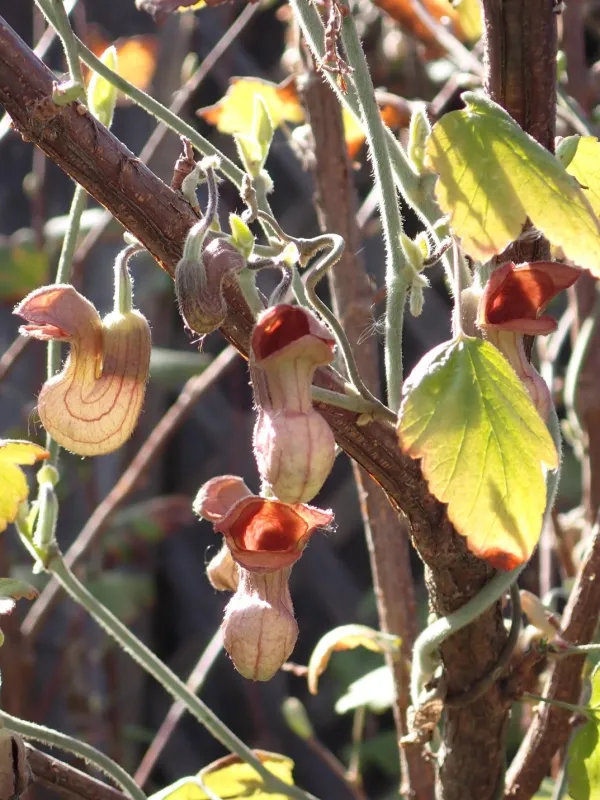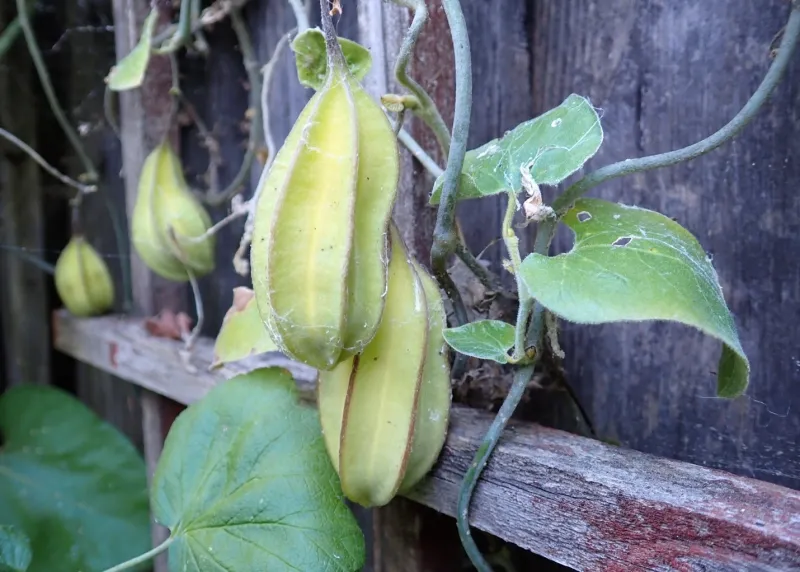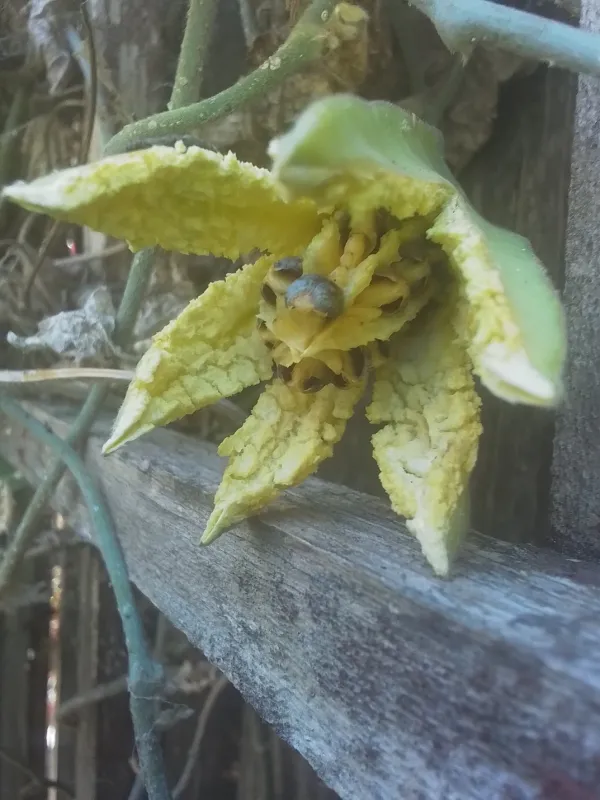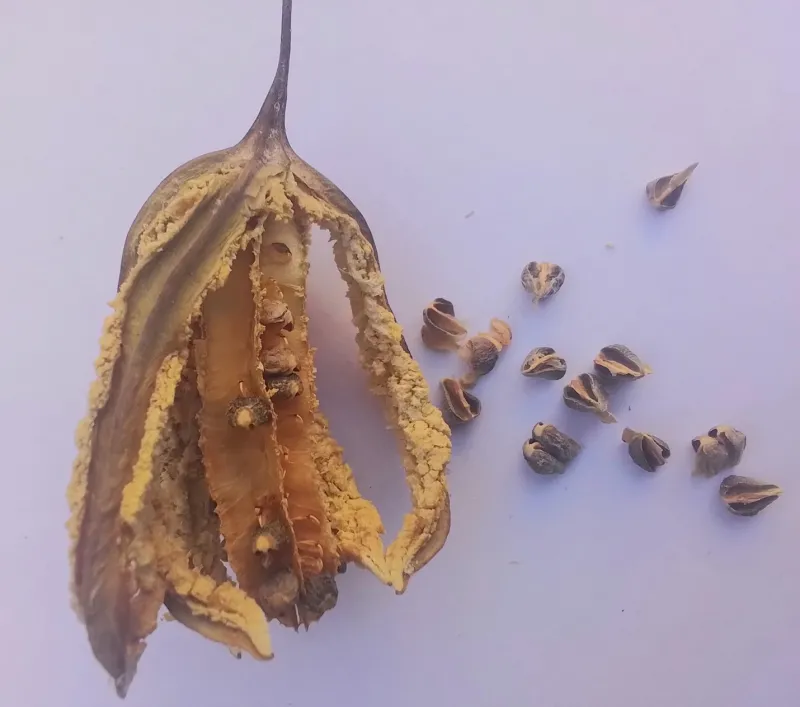Blog by Patricia Matteson, UC Master Gardener
As observed in a Suisun City garden, the fruits and seed dispersal of the California pipevine, or “California Dutchman’s pipe,” Aristolochia californica Torr., turned out to be remarkable and beautiful. There are over 500 species of pipevine in the family Aristolochiaceae, but this is the only one native to our state. It grows in moist habitats, mostly in the San Francisco Bay Area, the Sacramento Valley, and neighboring foothills below 1,500 ft. Photos and descriptions of the flowers and leaves are easy to come by, but information about the later stages of the pipevine’s annual cycle is far less so.

The deciduous vine was in full bloom by early February, when its new leaves were just starting to develop. Pipevine flowers are shaped like old-fashioned meerschaum pipes once popular in Germany and other European countries—hence the name. They have a musty fragrance that attracts tiny insect pollinators, which become temporarily trapped by hairs that line the inside of the flower.

Pipevine fruits are described by botanists as “dehiscent capsules,” meaning that they are formed from a compound ovary that splits open when mature. By early July, the yellow-green fruits were fully formed, their ridged shape reminiscent of edible starfruit. Starfruits (Averrhoa carambola L.), however, belong to the family Oxalidaceae and normally have five ridges. Pipevine fruits have six, reflecting a six-chambered ovary. The fruits on this vine varied in size and shape, ranging from 1 ½ to 2 ¾ inches long and 7/8 to 1 ¼ inches wide. Surprisingly, for two months there was no visible change in their appearance--they didn’t change color, dry out, or shrink.

Seed dispersal, when it finally occurred, was spectacular. In early September, the outer surface of the fruits split along the depressions between the ridges, forming six fleshy arms spread wide open. The arms were still green on the outside, and lined with thick, flocculent-looking yellow flesh. A yellow stalk, similarly fleshy, protruded from the center of each open fruit. Six septa running lengthwise along that stalk delineated the six chambers of the ovary. A row of large, pale brown seeds was embedded in each chamber. Immediately after opening, the fruits began drying out and the seeds dispersed quickly. (In order to be sure of harvesting some, the author bagged an unopened fruit.) Soon all that remained of the fruits were handsome dry remnants, curled and brown but retaining their elaborate shapes.

Each heart-shaped seed was connected to the central stalk by a membrane, the trace of which remained visible. Dried seeds from this vine had darkened and were 3/16 to ¼ inch long and 1/8 to 3/16 inch wide. Fallen seeds contribute to pipevine’s vigorous spread, which also expands via runners that can extend farther than 20 feet. These runners colonize open ground, rooting as they grow across the soil, and climb neighboring plants, which become interwoven with pipevine tendrils and leaves. The seed-and-runner combination can make this vine a formidable force in the garden.
